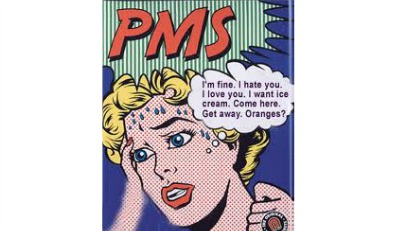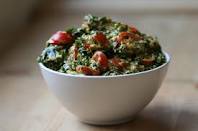So many families have been touched by Alzheimer’s. Now there is hope. According to Jean Carper, in her latest book “100 Simple Things You Can Do to Prevent Alzheimer’s and Age-Related Memory Loss” there are things we can do everyday. I highly recommend trying to incorporate a few of these easy things into your daily life. 
“The idea that Alzheimer’s is entirely genetic and unpreventable is perhaps the greatest misconception about the disease,” says Gary Small, M. D., director of the UCLA Center on Aging. Researchers now know that Alzheimer’s, like heart disease and cancer, develops over decades and can be influenced by lifestyle factors including cholesterol, blood pressure, obesity, depression, education, nutrition, sleep and mental, physical and social activity.
The big news: Mountains of research reveals that simple things you do every day might cut your odds of losing your mind to Alzheimer’s. In search of scientific ways to delay and outlive Alzheimer’s and other dementias, Carper tracked down thousands of studies and interviewed dozens of experts. Excerpted from her book, here are 10 strategies she found most surprising.
 1. Have coffee. In an amazing flip-flop, coffee is the new brain tonic. A large European study showed that drinking three to five cups of coffee a day in midlife cut Alzheimer’s risk 65% in late life. University of South Flo rida researcher Gary Arenas credits caffeine: He says it reduces dementia-causing amyloid in animal brains. Others credit coffee’s antioxidants. So drink up, Arendash advises, unless your doctor says you shouldn’t.
1. Have coffee. In an amazing flip-flop, coffee is the new brain tonic. A large European study showed that drinking three to five cups of coffee a day in midlife cut Alzheimer’s risk 65% in late life. University of South Flo rida researcher Gary Arenas credits caffeine: He says it reduces dementia-causing amyloid in animal brains. Others credit coffee’s antioxidants. So drink up, Arendash advises, unless your doctor says you shouldn’t.
2. Floss. Oddly, the health of your teeth and gums can help predict dementia.  University of Southern California research found that having periodontal disease before age 35 quadrupled the odds of dementia years later. Older people with tooth and gum disease score lower on memory and cognition tests, other studies show. Experts speculate that inflammation in diseased mouths migrates to the brain.
University of Southern California research found that having periodontal disease before age 35 quadrupled the odds of dementia years later. Older people with tooth and gum disease score lower on memory and cognition tests, other studies show. Experts speculate that inflammation in diseased mouths migrates to the brain.
3. Google. Doing an online search can stimulate your aging brain even more than reading a book, says UCLA’s Gary Small, who used brain MRIs to prove it. The biggest surprise: Novice Internet surfers, ages 55 to 78, activated key memory and learning centers in the brain after only a week of Web surfing for an hour a day.
 4. Grow new brain cells. Impossible, scientists used to say. Now it’s believed that thousands of brain cells are born daily. The trick is to keep the newborns alive. What works: aerobic exercise (such as a brisk 30-minute walk every day), strenuous mental activity, eating salmon and other fatty fish, and avoiding obesity, chronic stress, sleep deprivation, heavy drinking and vitamin B deficiency.
4. Grow new brain cells. Impossible, scientists used to say. Now it’s believed that thousands of brain cells are born daily. The trick is to keep the newborns alive. What works: aerobic exercise (such as a brisk 30-minute walk every day), strenuous mental activity, eating salmon and other fatty fish, and avoiding obesity, chronic stress, sleep deprivation, heavy drinking and vitamin B deficiency.
 5. Drink apple juice. Apple juice can push production of the “memory chemical” acetylcholine; that’s the way the popular Alzheimer’s drug Aricept works, says Thomas Shea, Ph. D., of the University of Massachusetts . He was surprised that old mice given apple juice did better on learning and memory tests than mice that received water. A dose for humans: 16 ounces, or two to three apples a day.
5. Drink apple juice. Apple juice can push production of the “memory chemical” acetylcholine; that’s the way the popular Alzheimer’s drug Aricept works, says Thomas Shea, Ph. D., of the University of Massachusetts . He was surprised that old mice given apple juice did better on learning and memory tests than mice that received water. A dose for humans: 16 ounces, or two to three apples a day.
6. Protect your head. Blows to the head, even mild ones early in life, increase odds of dementia years later. Pro football players have 19 times the typical rate of memory-related diseases. Alzheimer’s is four times more common in elderly who suffer a head injury, Columbia University finds. Accidental falls doubled an older person’s odds of dementia five years later in another study. Wear seat belts and helmets, fall-proof your house, and don’t take risks.
 7. Meditate. Brain scans show that people who meditate regularly have less cognitive decline and brain shrinkage – a classic sign of Alzheimer’s – as they age. Andrew Newberg of the University of Pennsylvania School of Medicine says yoga meditation of 12 minutes a day for two months improved blood flow and cognitive functioning in seniors with memory problems.
7. Meditate. Brain scans show that people who meditate regularly have less cognitive decline and brain shrinkage – a classic sign of Alzheimer’s – as they age. Andrew Newberg of the University of Pennsylvania School of Medicine says yoga meditation of 12 minutes a day for two months improved blood flow and cognitive functioning in seniors with memory problems.
8. Take D. A “severe deficiency” of vitamin D boosts older Americans’ risk of cognitive impairment 394%, an alarming study by England ‘s University of Exeter finds. And most Americans lack vitamin D. Experts recommend a daily dose of 800 IU to 2,000 IU of vitamin D3.
9. Fill your brain. It a. Tops: Juice. A glass of any fruit or vegetable juice three times a week slashed Alzheimer’s odds 76% in Vanderbilt University research. Especially protective: blueberry, grape and apple juice, say other studies.
b. Tea: Only a cup of black or green tea a week cut rates of cognitive decline in older people by 37%, reports the Alzheimer’s Association. Only brewed tea works. Skip bottled tea, which is devoid of antioxidants.
c. Caffeine beverages. Surprisingly, caffeine fights memory loss and Alzheimer’s, suggest dozens of studies. Best sources: coffee (one Alzheimer’s researcher drinks five cups a day), tea and chocolate. Beware caffeine if you are pregnant, have high blood pressure, insomnia or anxiety.
d. Red wine: If you drink alcohol, a little red wine is most apt to benefit your aging brain. It’s high in antioxidants. Limit it to one daily glass for women, two for men. Excessive alcohol, notably binge drinking, brings on Alzheimer’s.
e. Two to avoid: Sugary soft drinks, especially those sweetened with high fructose corn syrup. They make lab animals dumb. Water with high copper content also can up your odds of Alzheimer’s. Use a water filter that removes excess minerals.
5 Ways to Save Your Kids from Alzheimer’s Now Alzheimer’s isn’t just a disease that starts in old age. What happens to your child’s brain seems to have a dramatic impact on his or her likelihood of Alzheimer’s many decades later.
Here are five things you can do now to help save your child from Alzheimer’s and memory loss later in life, according to the latest research.
1. Prevent head blows: Insist your child wear a helmet during biking, skating, skiing, baseball, football, hockey, and all contact sports. A major blow as well as tiny repetitive unnoticed concussions can cause damage, leading to memory loss and Alzheimer’s years later.
2 Encourage language skills: A teenage girl who is a superior writer is eight times more likely to escape Alzheimer’s in late life than a teen with poor linguistic skills. Teaching young children to be fluent in two or more languages makes them less vulnerable to Alzheimer’s.
3. Insist your child go to college: Education is a powerful Alzheimer’s deterrent. The more years of formal schooling, the lower the odds. Most Alzheimer’s prone: teenage drop outs. For each year of education, your risk of dementia drops 11%, says a recent University of Cambridge study.
4. Provide stimulation: Keep your child’s brain busy with physical, mental and social activities and novel experiences. All these contribute to a bigger, better functioning brain with more so-called ‘cognitive reserve.’ High cognitive reserve protects against memory decline and Alzheimer’s.
5. Spare the junk food: Lab animals raised on berries, spinach and high omega-3 fish have great memories in old age. Those overfed sugar, especially high fructose in soft drinks, saturated fat and trans fats become overweight and diabetic, with smaller brains and impaired memories as they age, a prelude to Alzheimer’s.





















